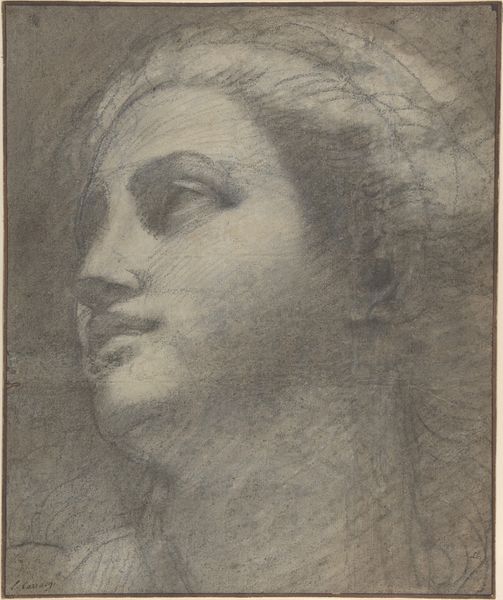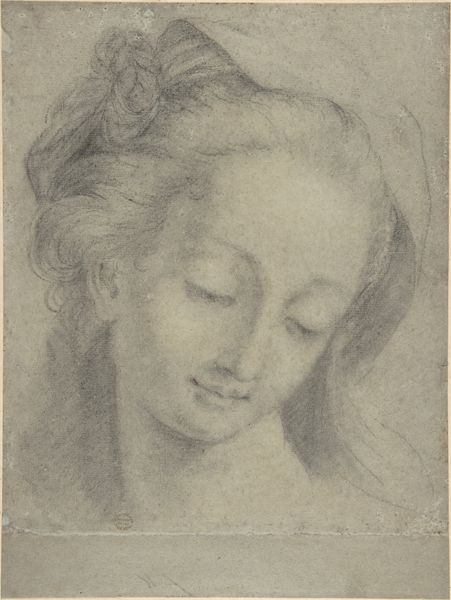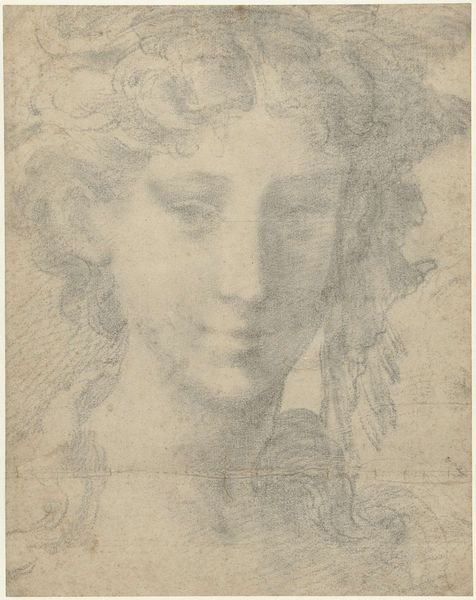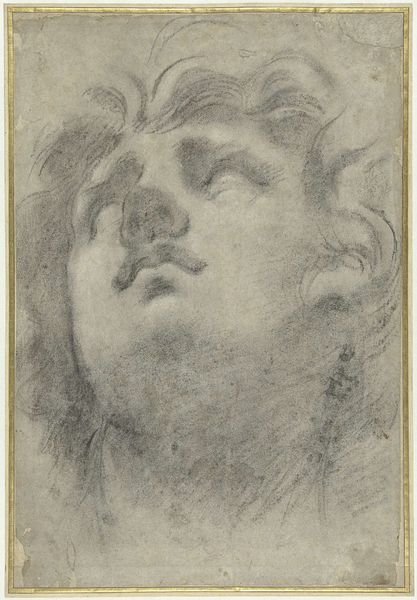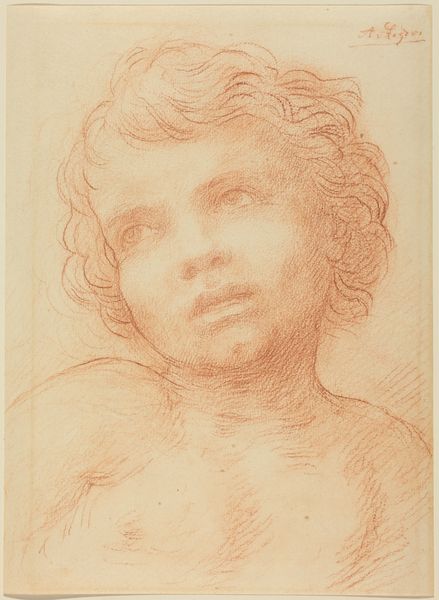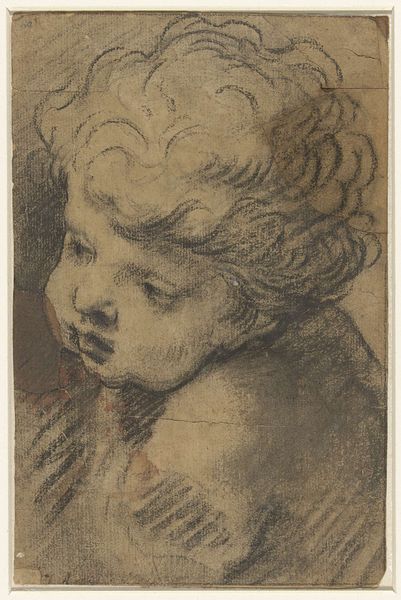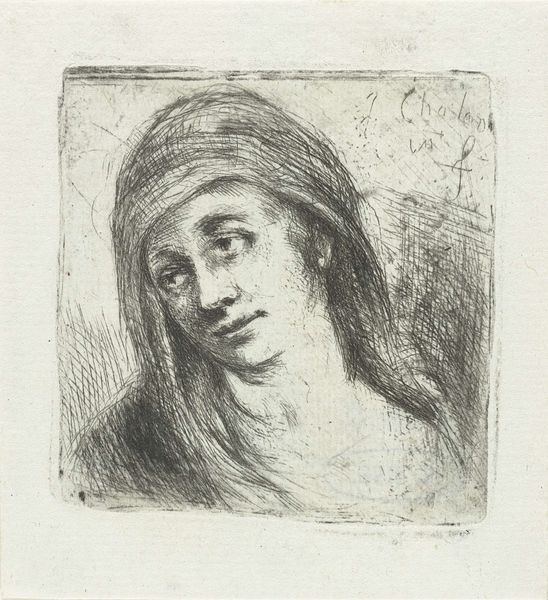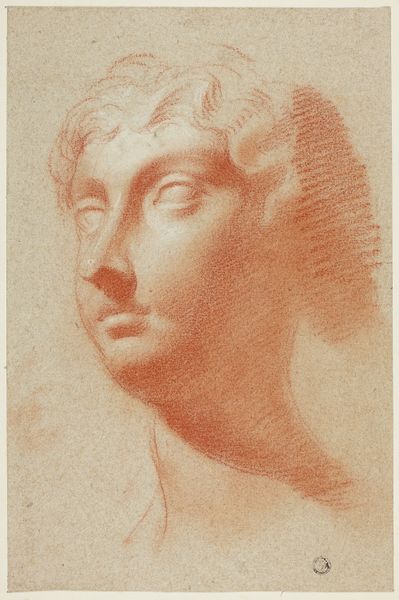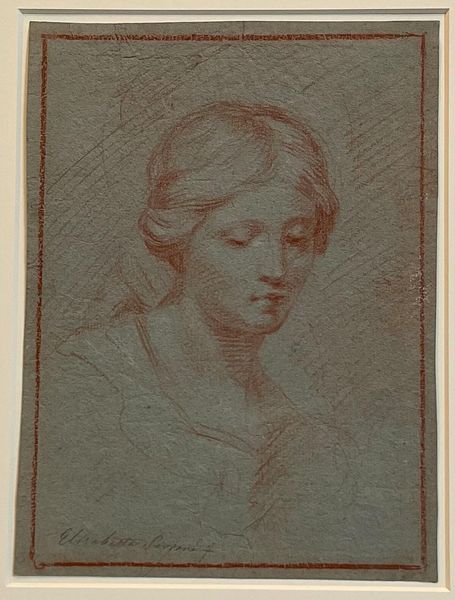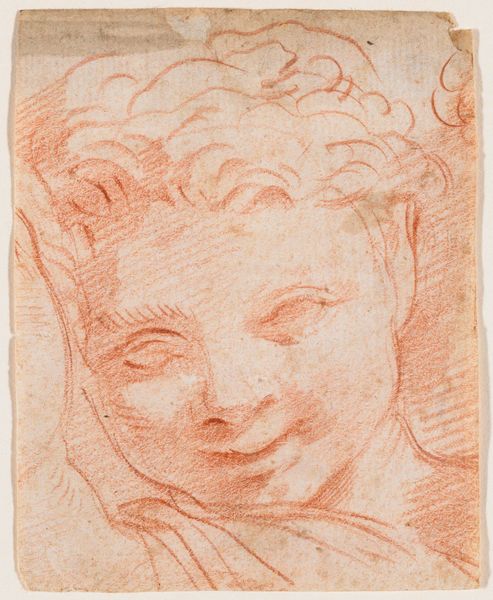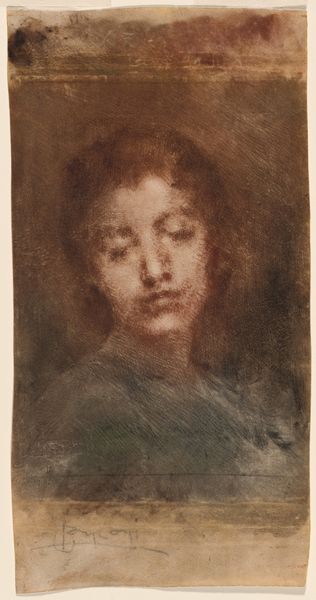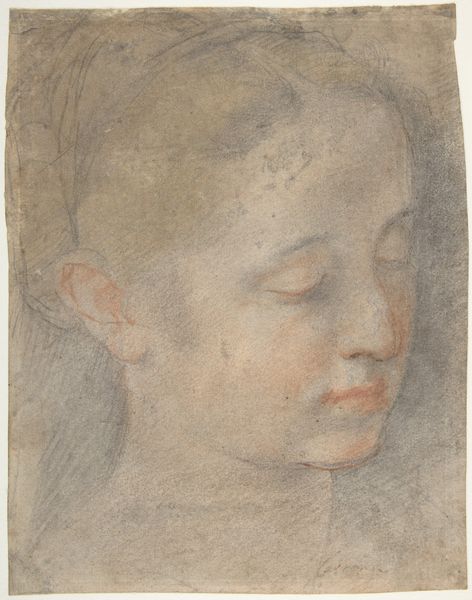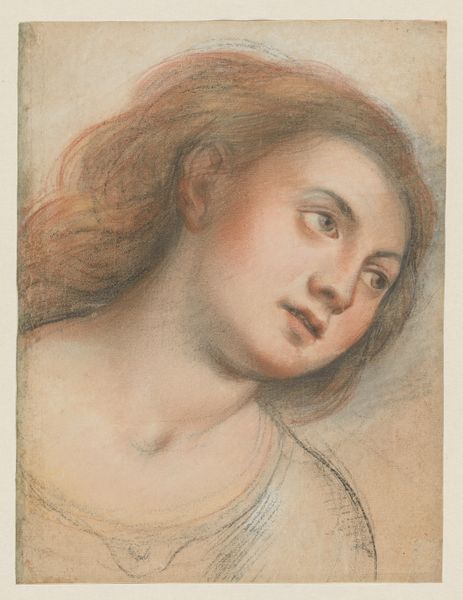
drawing, charcoal
#
portrait
#
pencil drawn
#
drawing
#
toned paper
#
facial expression drawing
#
pencil sketch
#
charcoal drawing
#
figuration
#
11_renaissance
#
portrait reference
#
pencil drawing
#
portrait drawing
#
charcoal
#
tonal art
#
italian-renaissance
#
fine art portrait
Dimensions: height 255 mm, width 205 mm
Copyright: Rijks Museum: Open Domain
Curator: Federico Barocci's "Head of a Boy," dating from the late 16th or early 17th century, offers a glimpse into the artist's preparatory studies. Executed in charcoal and pencil on toned paper, it’s currently held in the Rijksmuseum collection. Editor: It’s arresting, isn’t it? The downward gaze lends it an air of melancholy, a weight that seems beyond the boy’s years. And the soft shading… there's an almost dreamlike quality. Curator: Barocci was known for his expressive figuration and his innovative use of color. But what strikes me most is how this seemingly simple drawing served a larger purpose. Renaissance artists routinely used such studies to refine their understanding of form and emotion before committing to larger paintings or frescoes. Editor: Right, it's not just a portrait, but a step in the creative process. Looking at this drawing through the lens of labour, I'm reminded that even 'preliminary' works involved intense skill and often served as teaching tools within the workshop environment. Did Barocci consider such drawings as 'art' in their own right, or as mere tools to an end? Curator: That's the question, isn't it? In Barocci's time, the lines were still blurred between craft and fine art. Drawings like these held pedagogical value and could circulate within artist communities, informing technique and style. The concept of art as a distinct commodity was still developing. We mustn’t forget the patronage system and workshop culture in Renaissance Italy and how they molded an artist's vision and process. Editor: Exactly, and considering the boy's soft features, it would be important to consider the social implications of childhood and male representation in this era. I wonder if there is potential queer subtext embedded in the image. It could be a case study in understanding the era's social norms versus its potential subversions, right? Curator: That opens an interesting avenue for interpretation. It highlights how our present-day concerns influence how we look back. Editor: Indeed. Ultimately, viewing the artwork now requires that we engage critically with it so we see its value as a historical and artistic relic. Curator: A compelling intersection of skill, purpose, and perspective, I'd say. Editor: Agreed; it makes one consider art history through the artist’s context and what social impact can be had now that such a unique portrait of a boy is placed in today’s societal norms.
Comments
No comments
Be the first to comment and join the conversation on the ultimate creative platform.
